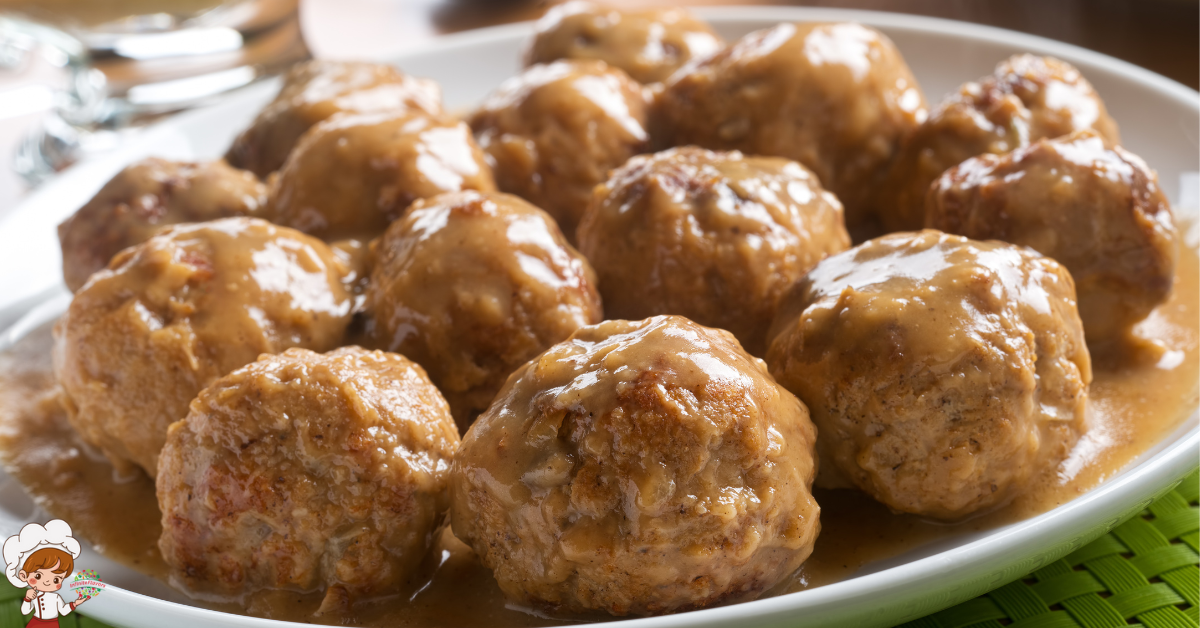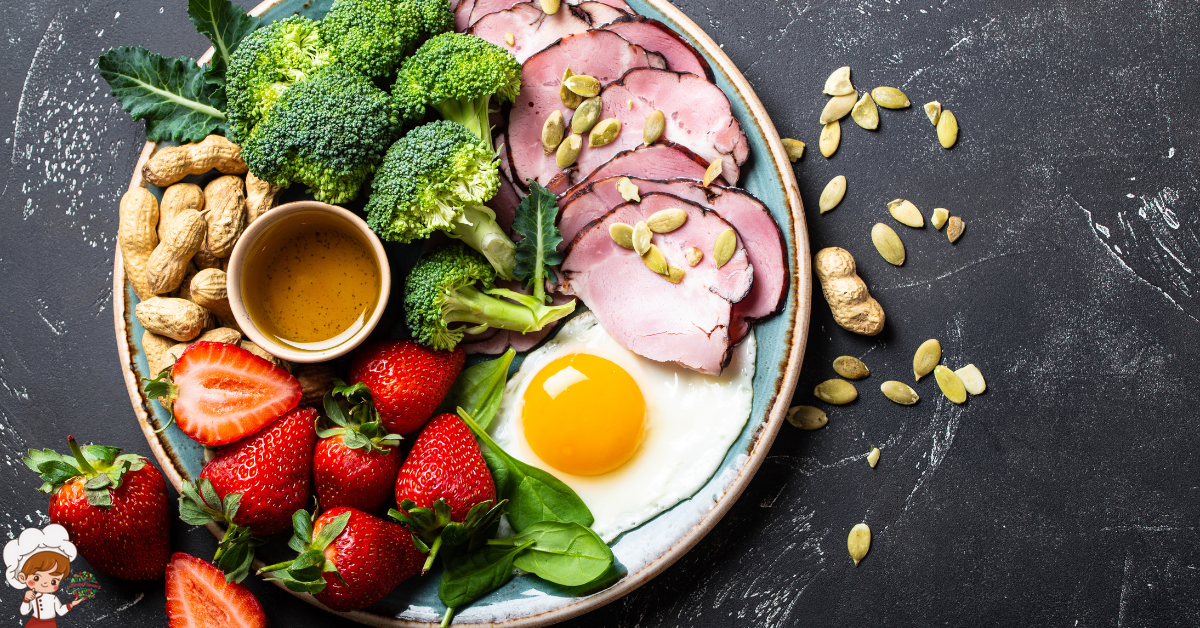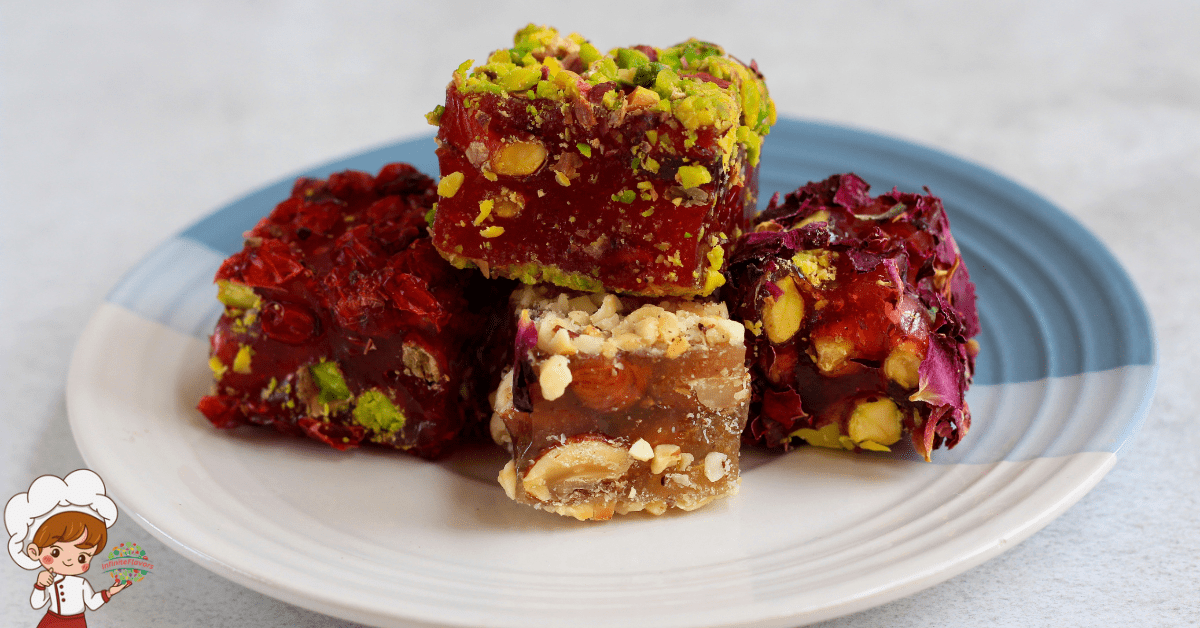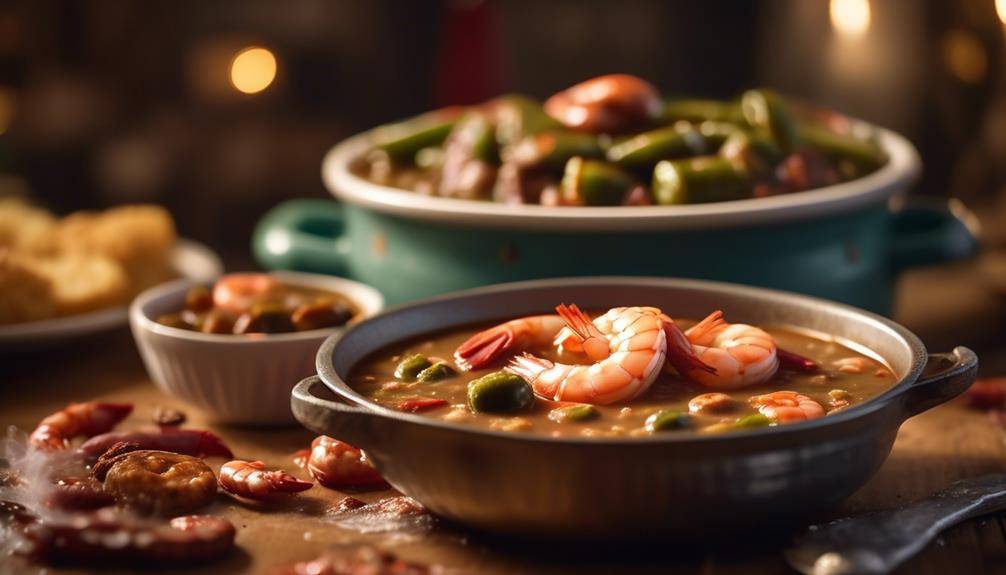11 Easy Tips To Revive Classic Swedish Dishes

To Revive Classic Swedish Dishes, start by embracing seasonal and local ingredients to enhance flavors. Experiment with global influences, adding unique spices and garnishes for a modern twist. Don’t forget to revitalize traditional cooking methods like pickling and slow cooking. Focus on presentation—colorful plating can elevate any dish. Incorporate modern kitchen gadgets for efficiency and creativity, and create your own sauces to personalize flavors. Adapt recipes for dietary needs with healthier alternatives. Engaging in sustainable practices can also enrich your culinary journey. Keep exploring these tips, and you’ll discover even more ways to innovate your Swedish cooking!
Embrace Seasonal Ingredients
Embracing seasonal ingredients not only enhances the flavors of classic Swedish dishes but also connects you with the local food culture. When you choose to focus on seasonal sourcing, you tap into the freshest produce and meats available, resulting in meals that truly represent the time of year. Imagine savoring a hearty beetroot soup in the fall or enjoying a vibrant strawberry dessert in midsummer. These ingredients not only taste better but also reflect the rhythms of nature.
Visiting local markets is a great way to discover what’s in season. You’ll find a variety of fresh fruits, vegetables, and herbs that can elevate your cooking. When you shop at these markets, you’re not just buying food; you’re supporting local farmers and artisans, which strengthens your community. You can ask vendors about their products and learn how they grow or prepare them, creating a richer culinary experience.
Incorporating seasonal ingredients into your cooking can be a simple yet transformative practice. For instance, you could create a traditional Swedish dish like gravlax but pair it with seasonal garnishes such as dill and fresh radishes. This approach not only respects the classic roots of the dish but also adds a modern twist with vibrant, fresh flavors.
Experiment With Fusion Flavors
When you experiment with fusion flavors, you can creatively integrate global ingredients into traditional Swedish dishes. By blending culinary techniques from different cultures, you’ll elevate the flavors and textures of your meals. This approach not only refreshes classic recipes but also broadens your culinary horizons.
Global Ingredients Integration
Exploring global ingredients can transform classic Swedish dishes into exciting culinary experiences. By embracing cultural exchange, you can elevate traditional recipes like meatballs or gravlax with unexpected flavors. Imagine incorporating spices from Indian cuisine, such as garam masala, into your meatballs to create a unique fusion that surprises your guests.
Ingredient sourcing plays an essential role in this journey. Seek out local markets that offer international products, allowing you to experiment with authentic flavors from around the world. For instance, try adding miso or sesame oil to a creamy dill sauce, giving your gravlax a delightful twist.
Don’t hesitate to merge ingredients that might seem unconventional. Pairing Swedish rye bread with Mediterranean spreads like hummus or tapenade can create a delicious appetizer that celebrates both cultures. Similarly, you can use Asian-inspired sauces to enhance your pickled herring, introducing new dimensions to a beloved classic.
The key here is to balance flavors while respecting the essence of the original dish. With a little creativity and courage, your culinary creations can reflect a harmonious blend of global influences, making every meal an adventure worth savoring.
Culinary Technique Blending
Blending culinary techniques can elevate your Swedish dishes to new heights, allowing you to experiment with fusion flavors that excite the palate. By embracing technique evolution, you can create dishes that combine Swedish traditions with global inspirations. Think of adding a touch of Asian flavors to your gravlax or incorporating Mediterranean spices into your köttbullar.
Start by understanding the foundational techniques of Swedish cooking, like pickling and roasting, then explore how they can mesh with other culinary practices. For instance, try smoking salmon using a blend of Swedish wood chips and South American spices. This fusion not only showcases culinary innovation but also honors the essence of both cuisines.
You can also play with textures by integrating different cooking methods. Consider a classic Swedish potato gratin, but layer it with a hint of Indian masala, giving it a spicy twist. Every experiment you make is a step toward creating unique dishes that reflect your personal style while respecting Swedish heritage.
Revitalize Traditional Cooking Methods
Revitalizing traditional cooking methods can breathe new life into classic Swedish dishes, making them more accessible and enjoyable. By embracing these traditional techniques, you’ll not only honor Sweden’s rich culinary heritage but also create meals that resonate with authenticity and flavor.
Start by incorporating methods like slow cooking, pickling, and smoking. These techniques were staples in Swedish kitchens, allowing flavors to develop over time and preserving ingredients for future use. For instance, instead of rushing through a meal prep, try slow-cooking a hearty köttbullar (meatball) dish. This method enhances the flavors and makes the dish more comforting.
Next, consider using seasonal ingredients and foraging, just as your ancestors did. This approach connects you to the land and its cycles, creating dishes that highlight the best produce of the season. Try making a classic ragù with wild mushrooms or an autumn harvest stew filled with root vegetables.
You can also revive the art of baking traditional breads or pastries. Sourdough, for example, has deep roots in Swedish culture. Taking the time to nurture a sourdough starter and experiment with different flours can lead to delicious results that showcase your commitment to traditional methods.
Lastly, don’t shy away from preserving food. Whether it’s making your own lingonberry jam or pickled herring, these traditional techniques add depth to your meals and a touch of nostalgia. By revitalizing these methods, you’ll keep the spirit of Swedish cooking alive while creating dishes that feel both familiar and fresh.
Focus on Presentation
After you’ve embraced traditional cooking methods, the next step is to elevate your dishes through thoughtful presentation. The way you plate your food can transform a simple meal into an unforgettable dining experience. Start by considering the plate you’re using; a clean, white plate often works best, as it allows the colors of your dish to shine.
Utilize various plating techniques to create visual interest. For instance, try stacking or layering your ingredients instead of simply placing them flat on the plate. This method adds height and dimension, drawing the eye to your dish. You can also use negative space effectively by leaving portions of the plate empty, which helps highlight the main elements of your dish.
Don’t forget about color contrasts! A well-presented dish should have a balance of colors that complements one another. For example, vibrant greens from herbs or vegetables can enhance the rich browns of a meat dish. Think about adding splashes of color with garnishes, like microgreens or edible flowers, which not only look beautiful but also can add flavor.
Lastly, consider the arrangement of your food. The way you position your ingredients can tell a story. Aim for a harmonious layout that guides the viewer’s eye around the plate, encouraging them to savor every element. By focusing on presentation, you’ll elevate your Swedish dishes and give your guests an experience that’s as visually delightful as it is delicious.
Incorporate Modern Kitchen Gadgets
To bring classic Swedish dishes into the modern age, you can easily incorporate essential kitchen tools and smart cooking appliances. These time-saving gadgets not only streamline your cooking process but also enhance the flavors of traditional recipes. Let’s explore how these innovations can elevate your culinary experience.
Essential Kitchen Tools
Equipping your kitchen with the right tools is crucial for bringing classic Swedish dishes to life in a modern setting. Start with a set of essential knives—sharp, versatile, and well-balanced. A chef’s knife will become your best friend for chopping ingredients, while a paring knife is perfect for intricate tasks like peeling and slicing. Investing in high-quality knives guarantees precision and safety while you cook.
Don’t overlook the importance of cooking thermometers. Whether you’re roasting a succulent meat dish or perfecting a delicate dessert, accurate temperature control is critical. A digital instant-read thermometer can help you avoid overcooking or undercooking your meals, guaranteeing that each dish turns out just right.
Consider adding a few modern kitchen gadgets to streamline your cooking process. A mandoline slicer can help you achieve consistent cuts for dishes like Janssons frestelse, while a food processor saves time on prep work. With these essential tools in your kitchen, you’ll have everything you need to revive traditional Swedish recipes while embracing the convenience of modern cooking. Equip yourself well, and you’ll impress friends and family with your culinary masterpieces.
Smart Cooking Appliances
Incorporating smart cooking appliances into your kitchen can elevate your culinary experience while simplifying the process of preparing classic Swedish dishes. Smart ovens, for instance, allow you to control cooking temperatures and times right from your smartphone. Imagine perfectly roasting a Swedish meatball casserole while you multitask in another room. You can set it to send notifications when it’s time to check on your dish.
Cooking apps are another game-changer. They provide step-by-step recipes, making it easy to follow traditional Swedish cooking methods without missing a beat. With features like voice commands, you can keep your hands free for chopping vegetables or mixing dough. Many apps also offer timers and measurement converters, which can be particularly helpful when adapting old recipes for modern tastes.
Additionally, some smart appliances come with built-in recipe libraries, allowing you to explore and discover classic Swedish dishes you might not have tried before. By embracing these technologies, you’ll not only streamline your cooking process but also enhance the flavor of your meals, ensuring that each dish is as delicious as it is authentic.
Time-Saving Gadgets
How can you save time in the kitchen while still enjoying the rich flavors of classic Swedish dishes? By embracing modern time-saving gadgets, you can streamline your meal prep and enhance your cooking experience. Consider investing in multitasking appliances like an Instant Pot or a slow cooker. These gadgets not only pressure cook but also slow cook, sauté, and even make yogurt, allowing you to create traditional dishes like köttbullar or gravlax with minimal effort.
Another great option is a food processor. It can chop, slice, and shred ingredients quickly, cutting your prep time considerably. You’ll find it invaluable when making dishes that require finely chopped vegetables or homemade sauces.
Don’t overlook the benefits of a high-quality immersion blender for soups and sauces; it’s easy to clean and perfect for puréeing your classic Swedish pea soup.
Lastly, smart kitchen scales can help you measure ingredients accurately, ensuring perfect results every time. By incorporating these time-saving gadgets, you’ll give yourself more freedom to enjoy the cooking process while still reviving those beloved Swedish flavors.
Use Healthier Alternatives
Many classic Swedish dishes can be made healthier without sacrificing flavor. By exploring ingredient substitutions, you can enhance the health benefits of your meals while staying true to the essence of traditional recipes. For instance, if a recipe calls for heavy cream, consider using Greek yogurt instead. It’s rich in protein and adds a creamy texture without the added fat.
You might also swap out regular potatoes for sweet potatoes in dishes like Jansson’s Temptation. Sweet potatoes are packed with vitamins A and C, and they offer a slightly sweeter taste that pairs well with the dish’s savory elements. When it comes to meats, try using lean cuts or plant-based proteins. Ground turkey or lentils can replace beef in meatballs, providing a lighter option while still delivering on flavor.
Another great substitution is using whole grain products instead of refined flour. Whole grain flour or oats can add fiber to your baking, boosting the health profile of classics like kanelbullar (cinnamon buns). And don’t forget about herbs and spices; they can amp up flavor without the extra calories.
Add Unique Garnishes
To elevate your classic Swedish dishes, consider adding unique garnishes that bring freshness and vibrancy. Fresh herbs and greens not only enhance flavor but also add a pop of color to your plate. Getting creative with your flavor enhancements can transform traditional recipes into exciting culinary experiences.
Fresh Herbs and Greens
Fresh herbs and greens can elevate classic Swedish dishes, adding vibrant flavors and visual appeal. You might consider incorporating fresh dill, parsley, or chives to enhance your meals. These herbs not only brighten your dishes but also bring a burst of freshness that transforms traditional recipes.
If you’re concerned about herb preservation, try drying or freezing your herbs, so you can enjoy their flavors year-round. This way, even in winter, you’ll have access to those delightful tastes that make Swedish cuisine so comforting. When fresh herbs aren’t available, don’t hesitate to use green substitutes like dried herbs or herb pastes; they can still deliver satisfying flavors.
For an extra touch, think about garnishing your plates creatively with microgreens or edible flowers. Not only do they add color, but they also provide unique flavor profiles that can surprise your guests. Remember, the goal is to enhance the dish while staying true to its roots. By incorporating fresh herbs and thoughtful garnishes, you’ll not only revive classic Swedish dishes but also make them your own, ensuring every meal is a delightful experience.
Creative Flavor Enhancements
A variety of unique garnishes can truly elevate your classic Swedish dishes, adding depth and intrigue. To make your meals memorable, consider incorporating umami boosters like sautéed mushrooms, which can enhance the savory notes of your dishes. A sprinkle of nutritional yeast can also bring a cheesy, nutty flavor that complements traditional recipes.
Don’t underestimate the power of spice blends, either. A dash of dill or a hint of smoked paprika can reinvent a simple creamy sauce or meat dish. You can even create your own spice mix, combining caraway seeds, black pepper, and a touch of cumin to give your dish a modern twist.
For a revitalizing contrast, add a pop of color with fresh microgreens or edible flowers. They not only look stunning but also provide a subtle flavor that can balance richer elements.
Create DIY Sauces and Condiments
Creating your own sauces and condiments can elevate classic Swedish dishes to new heights. By crafting unique sauce variations and flavorful condiment pairings, you’ll not only enhance the taste but also add a personal touch to your meals.
Start with a classic like lingonberry sauce. Instead of buying it pre-made, try simmering fresh or frozen lingonberries with sugar and a splash of lemon juice. This simple approach lets you control the sweetness and acidity, tailoring it to your preference. This sauce pairs beautifully with meatballs or roasted lamb.
Next, consider a mustard sauce. Mix Dijon mustard with honey, a bit of vinegar, and finely chopped dill for a zesty condiment that complements gravlax or herring. You can adjust the mustard level based on your taste, giving you a range of sauce variations from mild to spicy.
For a creamy element, whip up a sauce using sour cream, fresh chives, and a hint of garlic. This works as a perfect dip for potatoes or as a dressing for fish.
Experiment with these basic ideas to create your own signature sauces and condiments. You might even find that a Swedish-style barbecue sauce made with ketchup, vinegar, and spices becomes a family favorite. Ultimately, by making these condiments from scratch, you’ll not only delight your taste buds but also impress your guests with your culinary creativity. Enjoy the process, and watch your classic dishes transform!
Adapt Recipes for Dietary Needs
While traditional Swedish dishes are beloved for their rich flavors, adapting recipes to meet dietary needs can make them accessible to everyone. Whether you’re cooking for someone with gluten intolerance or lactose sensitivity, it’s easier than you think to modify classic recipes without losing their essence.
Start with gluten free adaptations. For example, if you’re making Swedish meatballs, simply swap out regular breadcrumbs for gluten-free alternatives like almond flour or gluten-free oats. These substitutes maintain the texture while guaranteeing your dish remains delicious. Don’t forget to check sauces and gravies; you can easily thicken them with cornstarch or arrowroot instead of flour.
Next, consider dairy free modifications. If a recipe calls for cream or milk, you can replace these with coconut milk or almond milk for a similar creaminess. Nutritional yeast can also add a cheesy flavor to dishes like gratins or casseroles. When baking traditional Swedish pastries, use a dairy-free butter alternative to achieve that perfect flaky texture.
Lastly, always taste as you go. Adjust seasonings and cooking times as necessary to guarantee that the final dish is just as flavorful as the original. By being mindful of substitutions, you can create meals that everyone can enjoy together, regardless of dietary restrictions. With these adaptations, you’ll keep the spirit of Swedish cuisine alive while making it inclusive for all.
Explore Global Influences
Swedish cuisine, rich in tradition, has been shaped by diverse global influences over the centuries. As you explore these culinary traditions, you’ll notice how cultural exchanges have introduced new flavors, techniques, and ingredients to classic dishes. For instance, spices from the Middle East, brought through trade routes, have made their way into Swedish recipes, giving them a unique twist.
You can start by incorporating international ingredients into traditional dishes. Imagine adding a hint of saffron to your meatballs or using coconut milk in a creamy potato soup. These small changes can elevate your meals while paying homage to Sweden’s culinary history. Consider embracing Asian flavors, like ginger and soy sauce, in your gravlax or pickled herring. Not only will this refresh your favorite recipes, but it’ll also create a delightful fusion of tastes.
Don’t shy away from experimenting with cooking techniques from around the globe. Try roasting vegetables with Middle Eastern spices or adopting Italian risotto methods to prepare a creamy barley dish. This approach allows you to create modern interpretations of beloved classics while honoring the influences that shaped them.
As you experiment, keep an open mind. You’ll find that the beauty of Swedish cuisine lies in its adaptability. By weaving in global influences, you not only revive classic dishes but also celebrate the interconnectedness of culinary traditions. So, immerse yourself, mix it up, and enjoy the journey of flavors that await you!
Engage in Sustainable Practices
Sustainable practices in the kitchen not only help preserve the environment but also enhance the flavors of classic Swedish dishes. By adopting a zero waste philosophy, you can transform how you cook while minimizing your impact on the planet. Start by utilizing every part of your ingredients. For instance, vegetable scraps can be turned into flavorful broths or composted, enriching your garden for future crops.
Local sourcing is another crucial strategy. When you buy ingredients from nearby farmers or markets, you’re not just supporting your community; you’re also getting fresher, seasonal produce that bursts with flavor. This approach aligns perfectly with traditional Swedish cooking, which often emphasizes the use of local and seasonal ingredients.
Consider foraging for wild edibles, such as berries or mushrooms, which can add unique flavors to your dishes while connecting you to the land. When you shop, choose organic products whenever possible to avoid harmful pesticides.
Additionally, plan your meals to reduce food waste. By prepping only what you need, you’ll guarantee that your ingredients stay fresh and that nothing goes to waste. If you find yourself with leftover food, get creative! Transform it into new dishes, such as turning yesterday’s meatballs into a hearty soup.
Frequently Asked Questions
What Are Some Classic Swedish Dishes to Start With?
To explore classic Swedish dishes, start with Swedish meatballs in köttbullar sauce, herring salad, and gravad lax. Don’t forget Jansson’s temptation, princess cake, and knäckebröd with lingonberry jam for a delightful experience!
How Do I Preserve Traditional Swedish Recipes?
To preserve traditional Swedish recipes, you can adapt cooking techniques and explore ingredient substitutions. Experiment with modern flavors while maintaining authenticity. Share your results with friends and family to keep the culinary heritage alive.
Are There Vegetarian Versions of Traditional Swedish Dishes?
Yes, you can find vegetarian versions of traditional Swedish dishes! Try making vegetarian meatballs with lentils and spices, or plant-based gravlax using marinated carrots. These alternatives capture the flavors while keeping it meat-free and delicious!
What Beverages Pair Well With Swedish Cuisine?
When enjoying Swedish cuisine, you can’t go wrong with Swedish beer for a crisp taste. Lingonberry juice adds a fruity twist, while Aquavit cocktails offer a herbal kick. Don’t forget to try some soothing herbal teas!
How Can I Introduce Children to Swedish Cooking?
To introduce children to Swedish cooking, involve them in meal prep. Let them help with simple tasks like mixing ingredients or setting the table. Make it fun, and they’ll enjoy learning about Swedish culinary traditions together.
Conclusion
By embracing these modern tips, you can breathe new life into classic Swedish dishes while keeping their essence intact. Seasonal ingredients and fusion flavors will elevate your culinary creations, while thoughtful presentation and DIY sauces add that special touch. Don’t forget to adapt recipes for dietary needs and engage in sustainable practices for a more conscious kitchen. So, get creative and enjoy the journey of reviving tradition with a contemporary twist!







